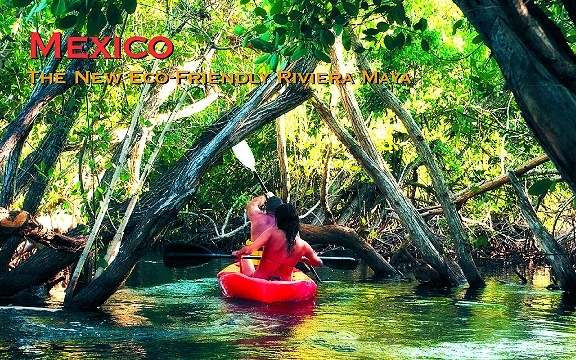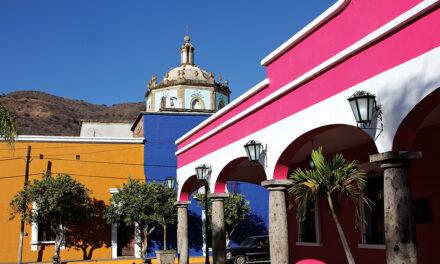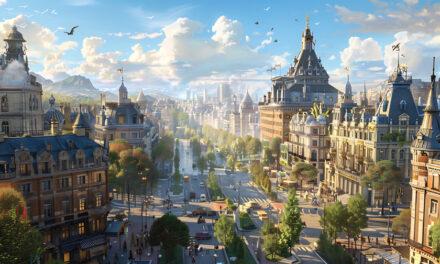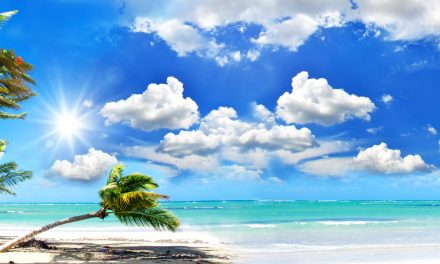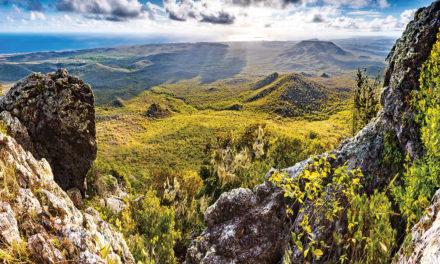Mexico
The New Eco-Friendly Riviera Maya
Published in the Fall 2009 Issue of Canadian World Traveller
By Greg James (greg@canadianworldtraveller.com)
Photos: Hacienda Tres Ríos and other sources
Arriving from Montreal on an early December evening, I was immediately engulfed in a blanket of warm humid air the moment I stepped out of the doors of Cancún’s International Airport. In the immortal words of Dorothy, this definitely was not Kansas.
Happily, for the next week I could safely store away my long winter coat, woolly scarf, gloves and boots.
However, my real mission here was to explore the new eco-friendly face of Mexico’s Riviera Maya and to report on the Yucatán Peninsula’s remarkable recovery from the devastating after-effects of past hurricanes.
Jacques Cartier’s Folly
The driver of the minivan waiting for me at the airport was cordial but not very talkative, so for the 43-km ride south along the coastal road to my accommodations, I was allowed to indulge in own private thoughts.
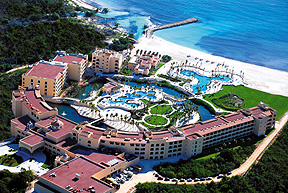 I mused about how different Montreal would have been had explorer Jacques Cartier sailed from France to Mexico’s sunny Caribbean shoreline back in 1535 instead of heading up the frigid unwelcoming waters of the Saint Lawrence River.
I mused about how different Montreal would have been had explorer Jacques Cartier sailed from France to Mexico’s sunny Caribbean shoreline back in 1535 instead of heading up the frigid unwelcoming waters of the Saint Lawrence River.
I was shaken from my reveries when we turned off the main road onto a winding, narrow, poorly lit gravel roadway bordered by lush tropical plants and trees.
Could this possibly be the way to the luxury resort that would be my home-away-from-home for the next seven days?
Natural Limestone Road
I would later find out that the ‘gravel’ was in fact local crushed limestone used to build this private access road to the beachfront resort.
The reason for using this natural material was to ensure that there would be the least possible impact on the delicate ecosystem of the surrounding wetlands.
Remarkably, drainpipes were installed under the roadway to insure that the fluctuating water level on either side would remain the same at all times.
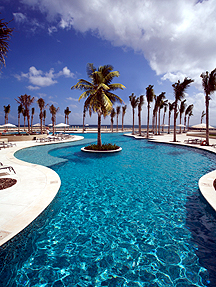 A Delicate Balance
A Delicate Balance
Cancún, which used to be a sleepy fishing village, is now home to 150-plus hotels boasting some 24,000 rooms and 380 restaurants to serve its four million sun-seeking annual international visitors.
However, for those wanting a more relaxed and infinitely more eco-friendly holiday on the Riviera Maya, there are other choices to be found not very far away from the bright lights and 24-hour activities of the Riviera’s major centre.
My short stay at Hacienda Tres Ríos would prove to be an extraordinary and eye-opening experience. This unique resort that’s just half-an-hour’s drive from Cancún made me realise that one does not have to sacrifice creature comforts and luxuries to achieve sustainable tourism in a vulnerable environment.
Land Above Water
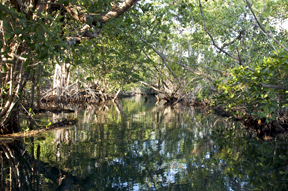 One of the more fascinating facts that I would learn about the Yucatán Peninsula, which separates the Gulf of Mexico from the Caribbean Sea, is that the entire landmass ‘floats’ on an extensive contiguous aquifer.
One of the more fascinating facts that I would learn about the Yucatán Peninsula, which separates the Gulf of Mexico from the Caribbean Sea, is that the entire landmass ‘floats’ on an extensive contiguous aquifer.
This is composed of layers of fresh and salt water that permeate the peninsula’s delicate honeycombed limestone structure.
In costal regions, such as the Mayan Riviera, the peninsula’s Caribbean shoreline, the limestone is only covered by a thin layer of earth, making natural vegetation particularly susceptible to damage by strong winds and thoughtless tourism development.
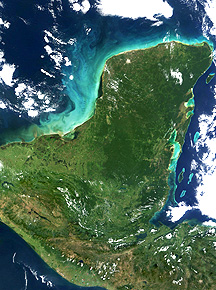
Demise of the Dinosaurs
The peninsula’s thousands of sinkholes, locally called cenotes, provide access to its extensive groundwater system. In fact, the local Maya people have long relied on cenotes for their freshwater needs.
According to one theory, a ‘ring of cenotes’ visible from space defines the edge of the huge crater formed when an asteroid crashed down on the area 65 million years ago, causing the mass extinction of the dinosaurs. If that hypothesis is true, cenotes have been around for a very long time!
Riverside Dining
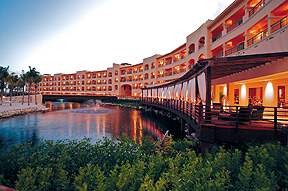 The elegant dining room of Hacienda Tres Ríos is situated alongside one of the area’s so-called ‘three rivers’, which are actually the outflows of nearby cenotes.
The elegant dining room of Hacienda Tres Ríos is situated alongside one of the area’s so-called ‘three rivers’, which are actually the outflows of nearby cenotes.
During the construction of the resort, the outflow of this cenote was carefully channelled through the resort and is one of its most unique features.
Today, the slow-flowing freshwater stream still winds its way through the carefully tended mangrove-covered banks of the canal on its way to the sea.
Romantic footbridges span the canal, which runs in a serpentine pattern through most of the resort’s extensive beachfront grounds.
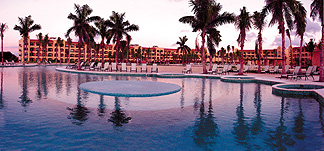 Circular wading and swimming pools and stone-paved sunning and casual-dining areas were designed to complement the natural course of the cenote.
Circular wading and swimming pools and stone-paved sunning and casual-dining areas were designed to complement the natural course of the cenote.
In the evenings, subtle outdoor lighting adds to this magical combination of nature and outdoor resort amenities.
Green Resort
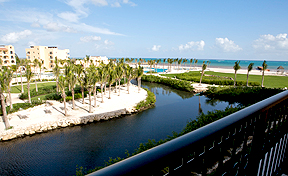 In a behind-the-scenes tour of the resort, I discovered yet another of its ‘green’ aspects. Hacienda Tres Ríos has its own desalination system, which provides an ample supply of fresh water, thereby avoiding the need to deplete the Yucatán’s precious underground aquifer.
In a behind-the-scenes tour of the resort, I discovered yet another of its ‘green’ aspects. Hacienda Tres Ríos has its own desalination system, which provides an ample supply of fresh water, thereby avoiding the need to deplete the Yucatán’s precious underground aquifer.
In addition, the components of the complex were prefabricated off-site and erected on 400 raised pilings, allowing for the natural ebb and flow of the groundwater below.
But I was yet to discover the resort’s finest eco-friendly initiative during my tour of its 326-acre eco-park by electric car.
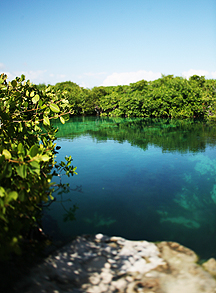 Preserving Biodiversity
Preserving Biodiversity
In the heart of the park, which actually surrounds the resort, I visited its remarkable plant nursery where botanists cultivate a wide variety of local flora for replanting in the surrounding shoreline where the natural vegetation had been damaged by past hurricanes.
I was particularly impressed by the special care being taken to preserve the biodiversity of the area’s 120-plus plant and tree species. Before my visit here, I had no idea that there were so many different types of mangrove trees!
For those who may not be familiar with mangroves, they thrive in salt water. Some of them even float out to sea, creating their own islands!
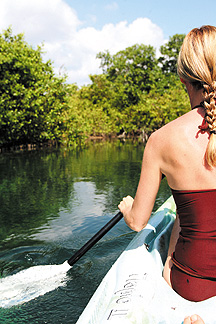
Floating Down a Cenote
Our electric-car tour of the park ended at the source of one of the resort’s cenotes. After a light picnic lunch we donned our floatation devises, snorkelling masks and fins and plunged into the invigorating, slightly wine-coloured deep waters of the cenote. The less adventurous opted to use a kayak.
After frolicking about for a while in what some consider to be a fountain of wellness and youth, we started our single-file ‘float’ down the winding outflow of the cenote. It was actually quite shallow in spots due to the tree trunks and branches that had fallen or been blown over by hurricanes into the narrow stream.
Me? James Bond!
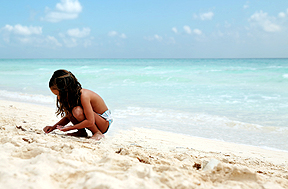 As we approached the beach, the cenote’s fresh water mingled with the salt water coming in from the sea.
As we approached the beach, the cenote’s fresh water mingled with the salt water coming in from the sea.
Climbing out onto the sandy beach, I felt like I had snagged a bit role in a James Bond movie. All I needed was the wet suit!
I was amazed to discover that we had floated all the way to the beachfront of Hacienda Tres Ríos and just steps away from a refreshing cold ‘cerveza’ and another great meal lovingly prepared by the resort’s executive chef Oscar Quiroz, who incidentally had previously worked as a chef in Montreal!
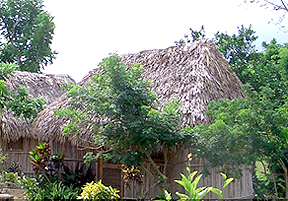 Indigenous Adventure
Indigenous Adventure
How often have you heard tourists complain that they didn’t have the opportunity to learn about the real people who live in the destination of their choice?
Although many Riviera Maya visitors make a point of seeing the area’s most important pre-Columbian site at Talum, very few actually meet and interact with the present-day indigenous people of the Yucatán.
All that changed for me when I met Jesus, a charming and very enthusiastic young guide who had decided to leave his native Spain and become involved with the locally formed Kanché Civil Association.
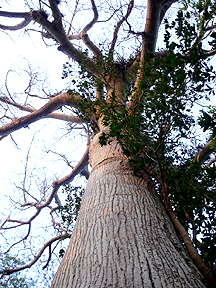
Germinating an Idea
Kanché takes its name from a common Mayan household item. A “kanché” is a kind of indoor germinator where locals plant their seeds so that the emerging buds cannot be eaten by insects and wild animals.
The Kanché Civil Association is dedicated to preserving and promoting of local Mayan culture and sustainable economic development through its programs of responsible tourism.
There is a wonderful bilingual (Spanish and English) website (www.kanche.org) where you can learn more about the truly fascinating tours Kanché offers to anyone who wants to see and experience “the real thing” while visiting the Riviera Maya.
Intriguing Hike
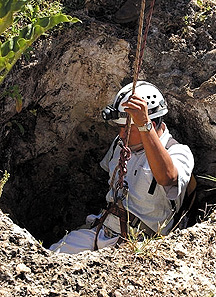 Our Kanché tour included a short hike through a wooded area during which our guide pointed out several notable trees, including the ceiba known as the “Tree of Life” by the Mayan because its trunk looks like a pregnant woman and the chicozapote or gum tree, the resin of which was used to make the original chewing gum!
Our Kanché tour included a short hike through a wooded area during which our guide pointed out several notable trees, including the ceiba known as the “Tree of Life” by the Mayan because its trunk looks like a pregnant woman and the chicozapote or gum tree, the resin of which was used to make the original chewing gum!
There was also an “itching tree”, which you shouldn’t touch and another to cure the itch if you did. I didn’t touch it, but I did take on the dare to sample the quite piquant berries of the “pepper tree”.
The informative hike ended at a hole in the ground in the middle of a clearing.
Three sturdy posts had been tied together tepee-style above the admittedly small opening. A pulley system attached at the apex was used by cavers to rappel down into the six-metre-deep hole (about 20 feet).
Needless-to-say, this is not for everyone but one of my companions, a quite large but active girl, got geared up in harness and helmet and braved the descent.
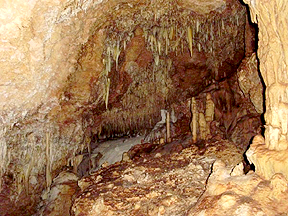
“New Life” Cave
The cave was not large but the story our local guide related about its origin was intriguing. It seems his father had discovered the cave when he accidentally fell through the thin covering of earth in what was then his vegetable field.
After several days, his aged father managed to climb out of the hole with just a few injuries. Consequently, the cave was named “New Life”.
Spiritual Experience
When we arrived at a relatively small flat-bottomed, low-ceilinged chamber of the cave, our guide instructed us to lie flat on our backs in a circle, turn off our helmet lights and think of whomever or whatever we believed our creator to be.
I had never been in such a dark and quiet place in my life and it was a truly spiritual experience! Afterwards, our guide told us that he actually had to awaken two young American male visitors who had fallen into a deep sleep during their meditation!
Mayan Cuisine and Handicrafts
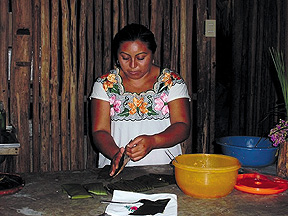 We ended our day with a wonderful meal prepared and served by local Mayan women in one of the thatch-roofed buildings of a nearby village.
We ended our day with a wonderful meal prepared and served by local Mayan women in one of the thatch-roofed buildings of a nearby village.
This was also a great opportunity to meet the villagers and buy authentic handmade articles including wonderful hammocks that had taken weeks to weave by members of the village’s households.
My only regret was that we could not have stayed for a longer visit to get to know these gentle hospitable people.
Splendid Farewell Cruise
On the final day on the Riviera Maya, we boarded a magnificent yacht at Sunset Lagoon in Cancún for a leisurely cruise to Isla Mujeres, which lies about 13 kilometres (8.1 miles) northeast of Cancún in the azure, sun-dappled waters of the Caribbean Sea.
We didn’t go ashore but I learnt that this car-free ‘Island of Women’ was so named by early Spanish explorers because of the many cult figures to the Mayan moon goddess that they found there upon their arrival in the New World.
Today, quite a few impressive sculptures grace the high shorelines of the island. These striking modern-day open-air “objets d’arts” were quite visible as we cruised by on our spacious luxury yacht.
Hasta la Vista!
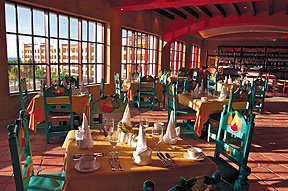 As the rather brisk sea breeze blew the occasional salty spray up onto the deck, I couldn’t help but reminisce about the previous few days.
As the rather brisk sea breeze blew the occasional salty spray up onto the deck, I couldn’t help but reminisce about the previous few days.
Among my lasting memories are the wonderful meals, well-appointed room, impeccable service and incredibly eco-friendly efforts of the Hacienda Tres Ríos.
And how could I forget the night I boogied at one of Playa del Carmen’s many hot nightspots.
But last but not least, the really meaningful part of my trip was seeing and experiencing nature at its best and learning about the valiant initiatives being undertaken to sustain and support the indigenous cultures along Mexico’s famed Riviera Maya.
Where to Stay
Hacienda Tres Ríos
Email: reservations@haciendatresríos.com
Website: www.haciendatresrios.com
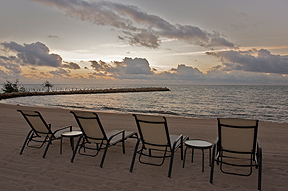 Local Touring Info:
Local Touring Info:
Kanché Civil Association
Website: www.kanche.org
(Click on the pictures to the right and look for the British Flag)
More Info About Riviera Maya:
Riviera Maya Tourism
Website: www.rivieramaya.com

